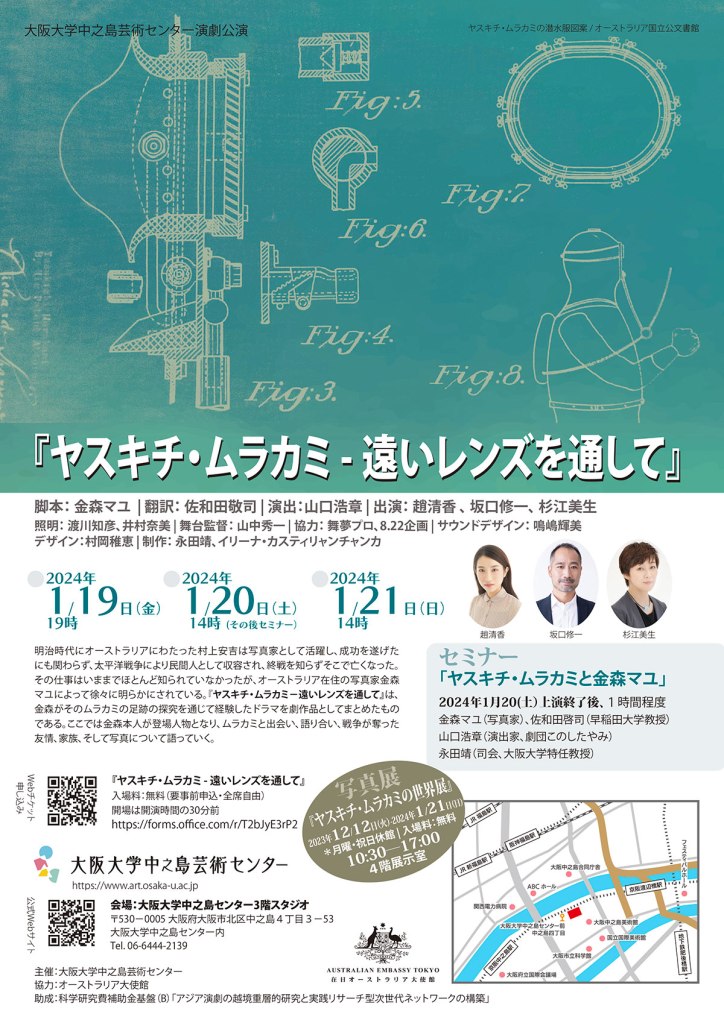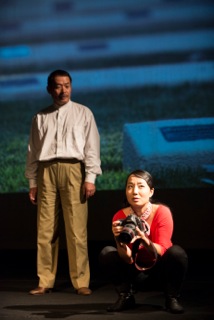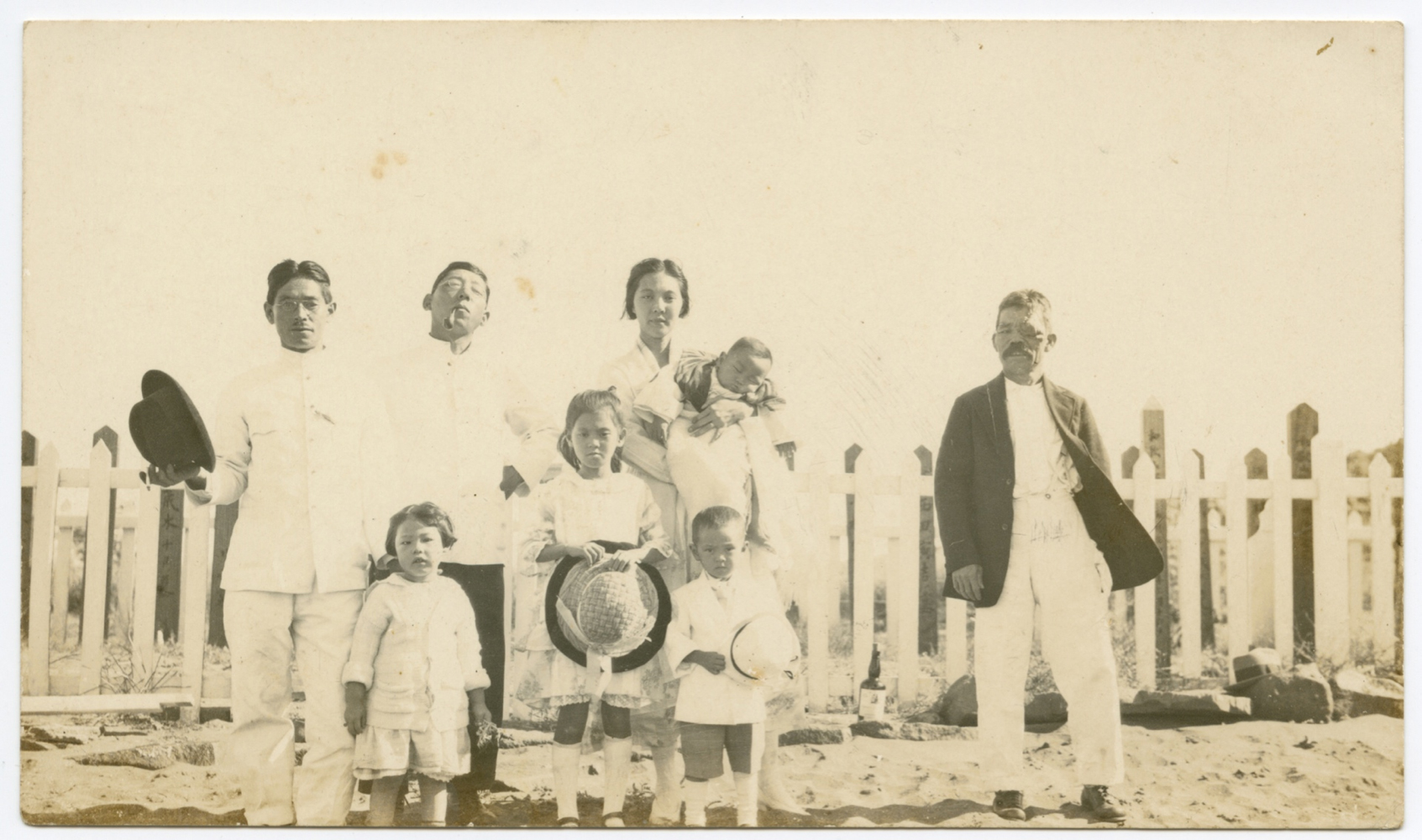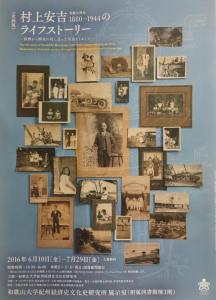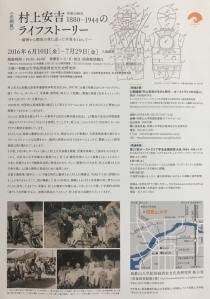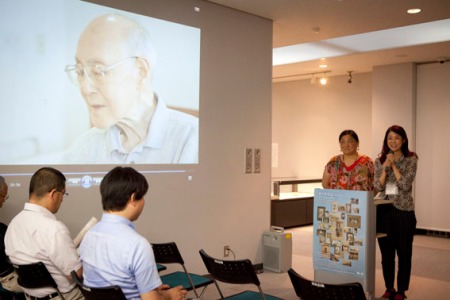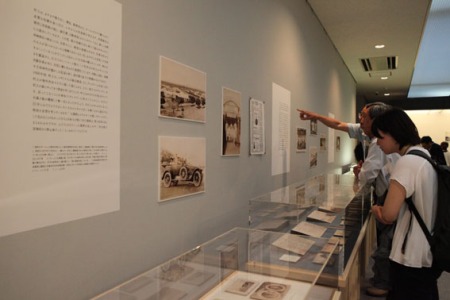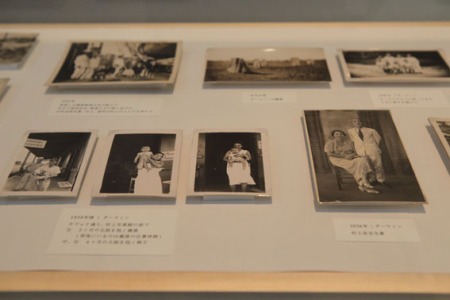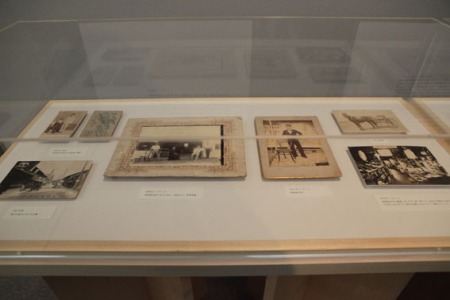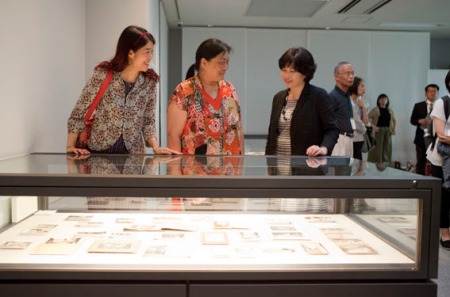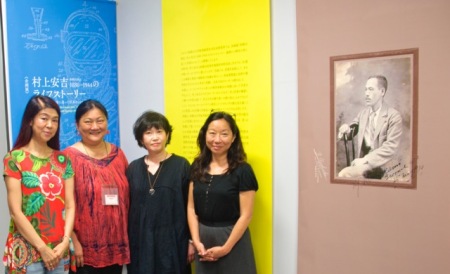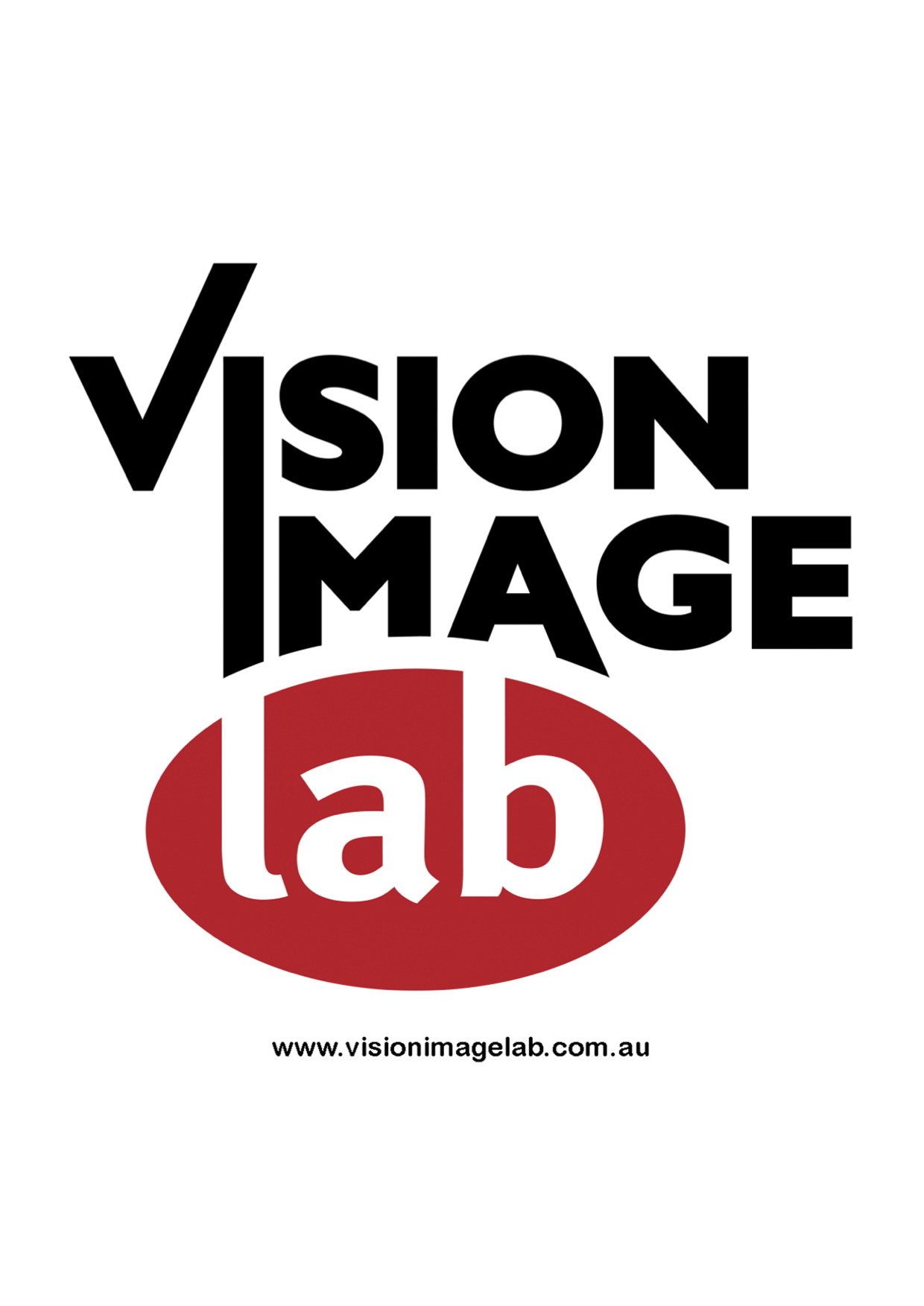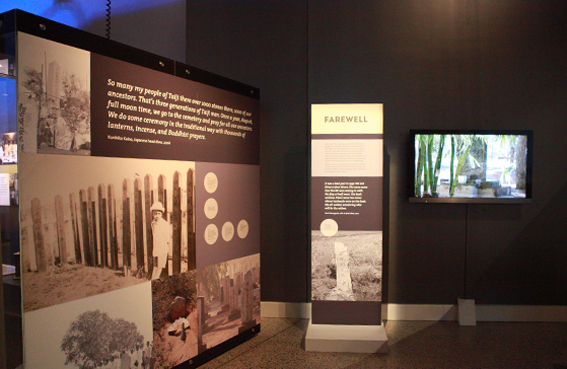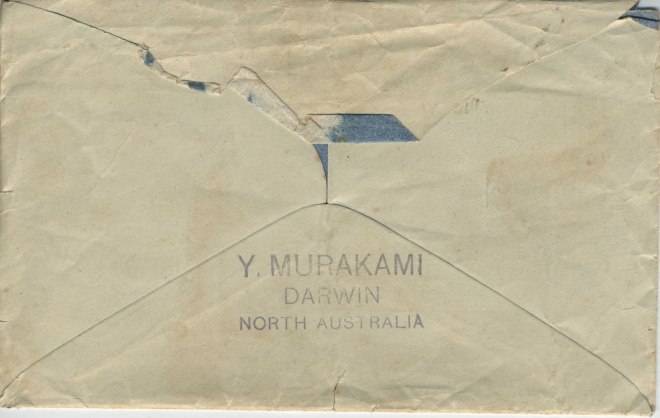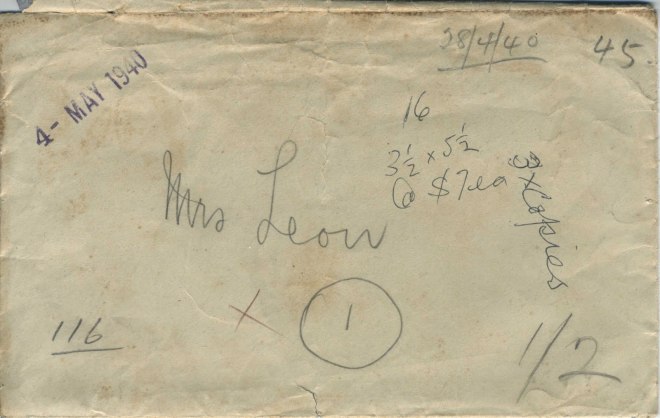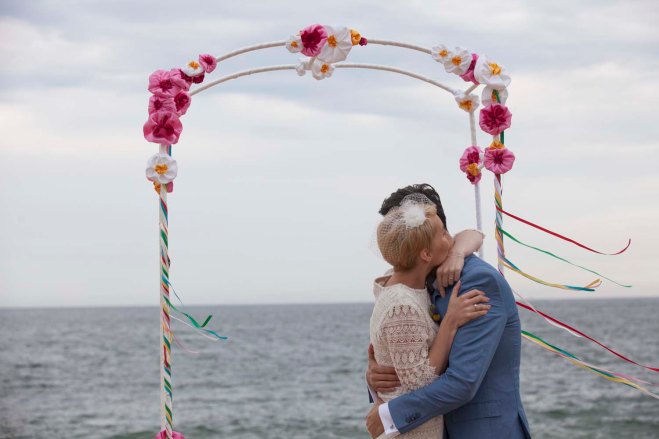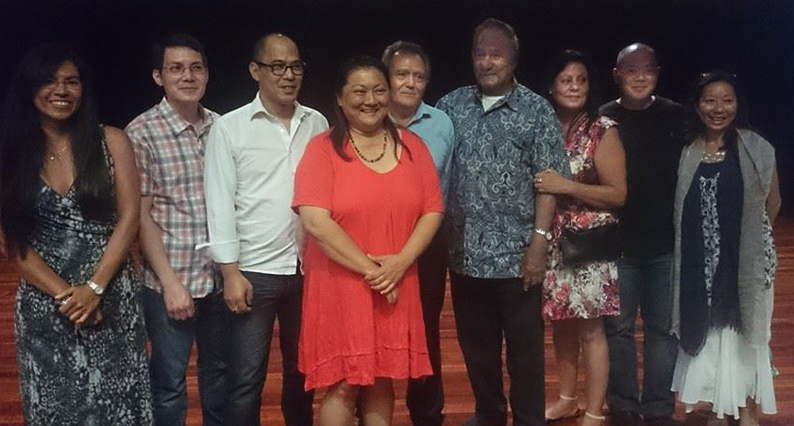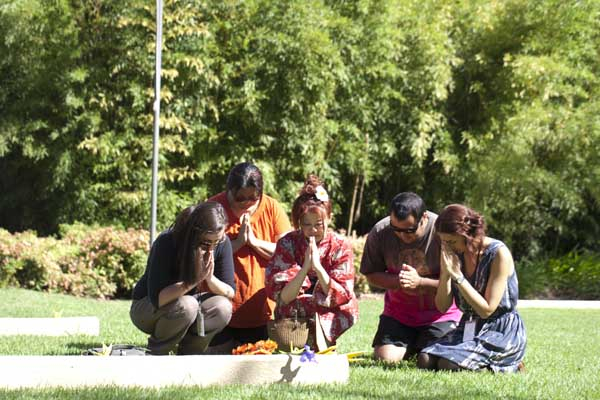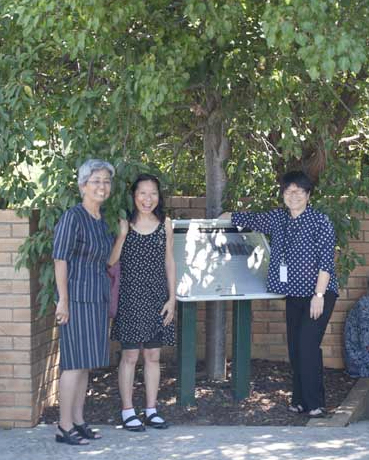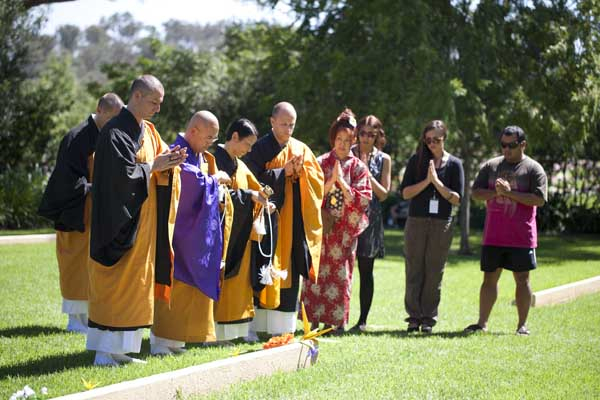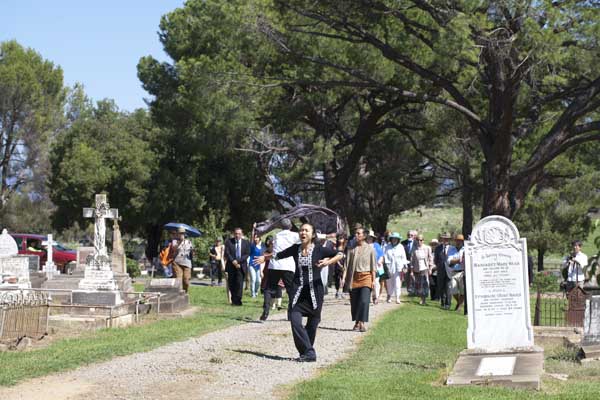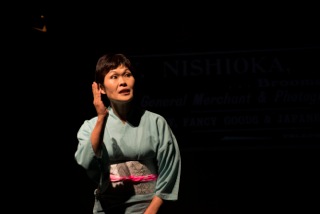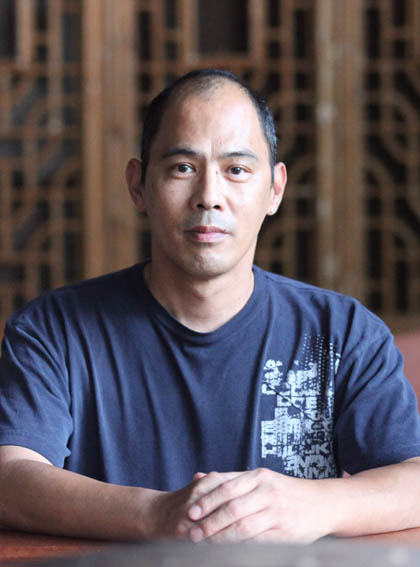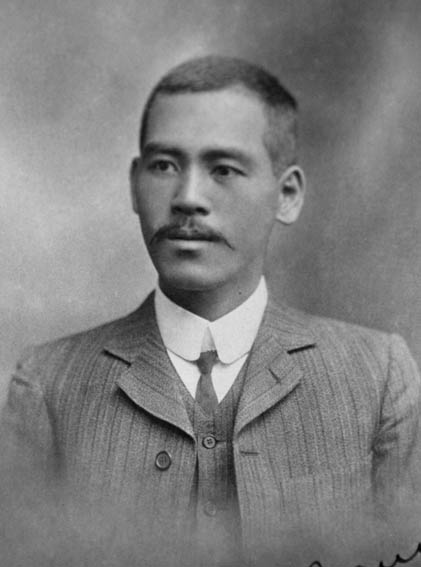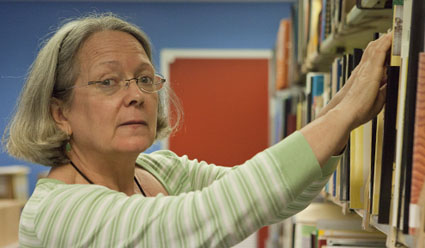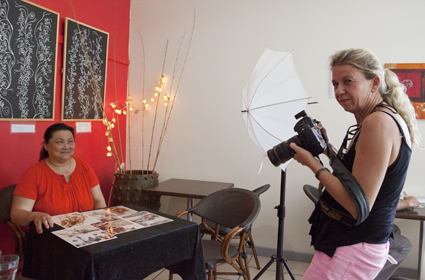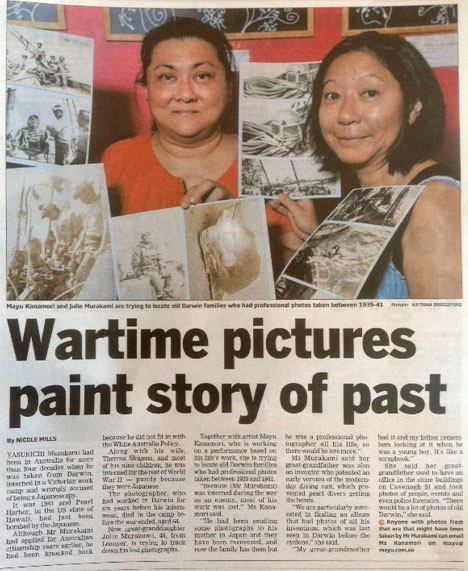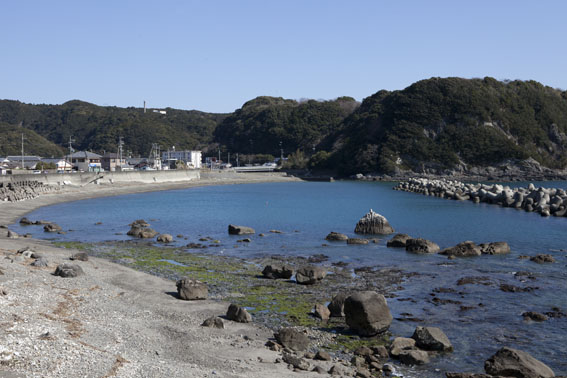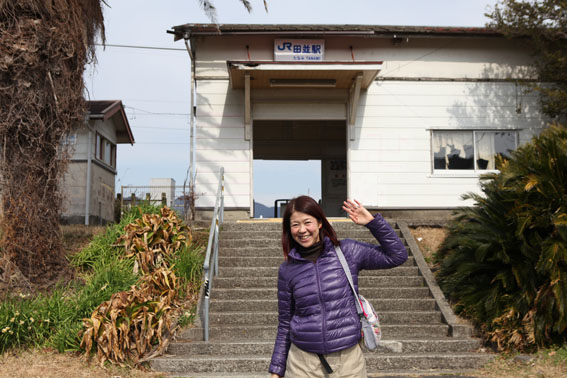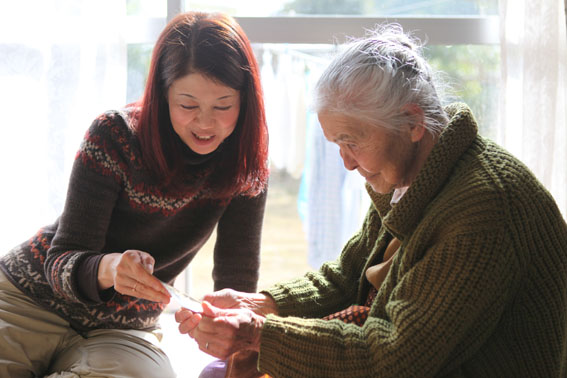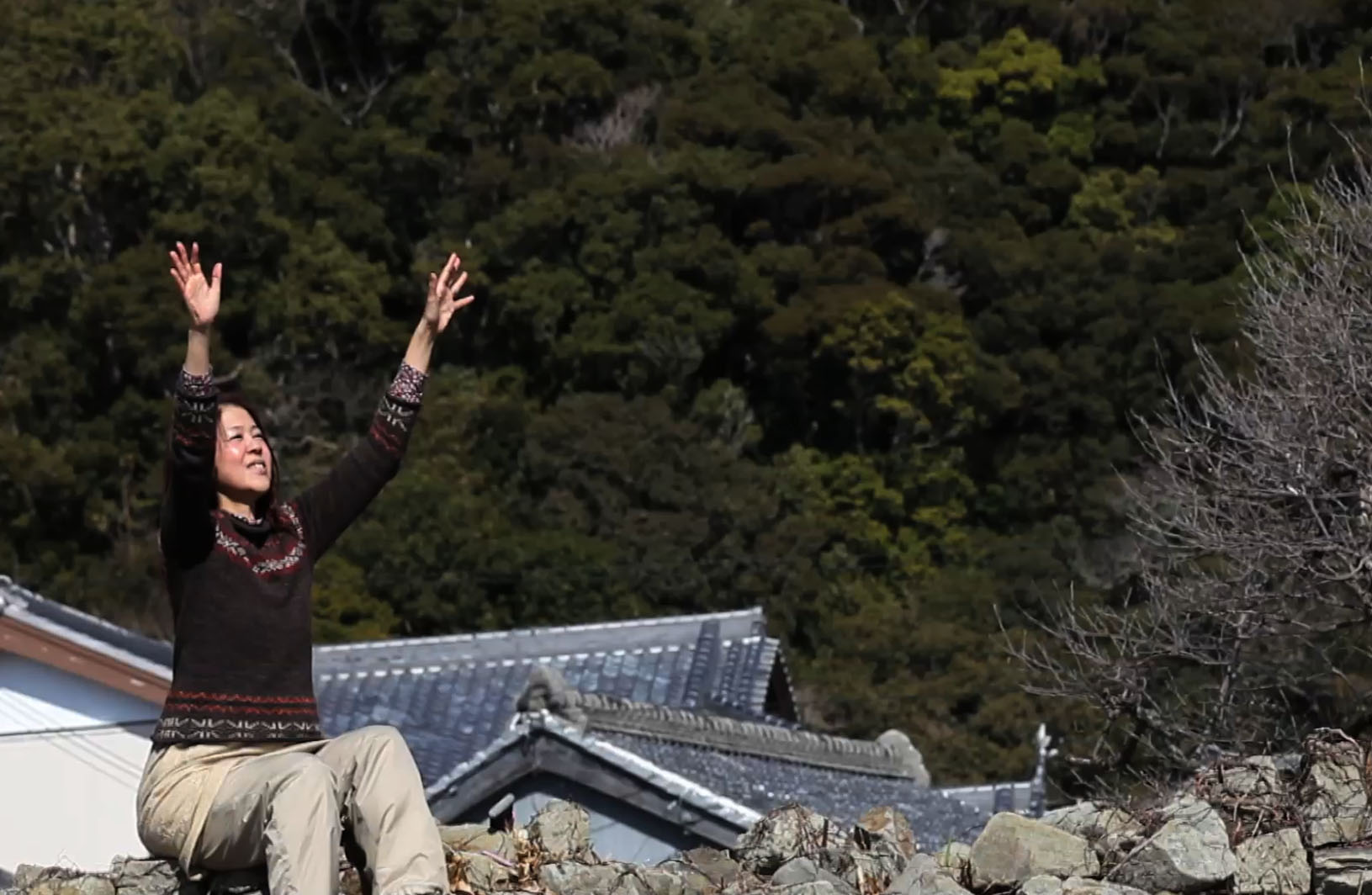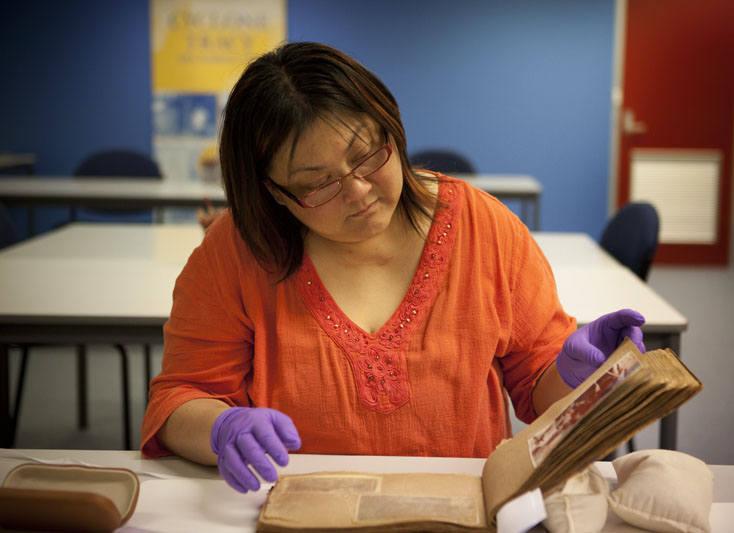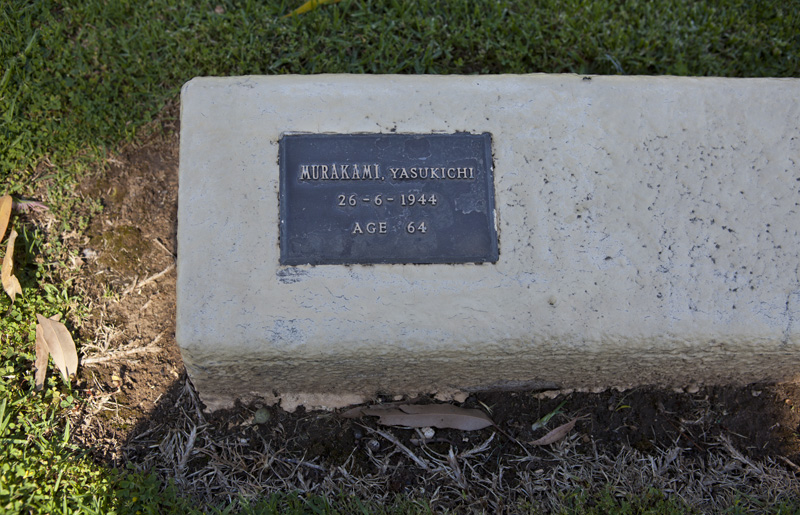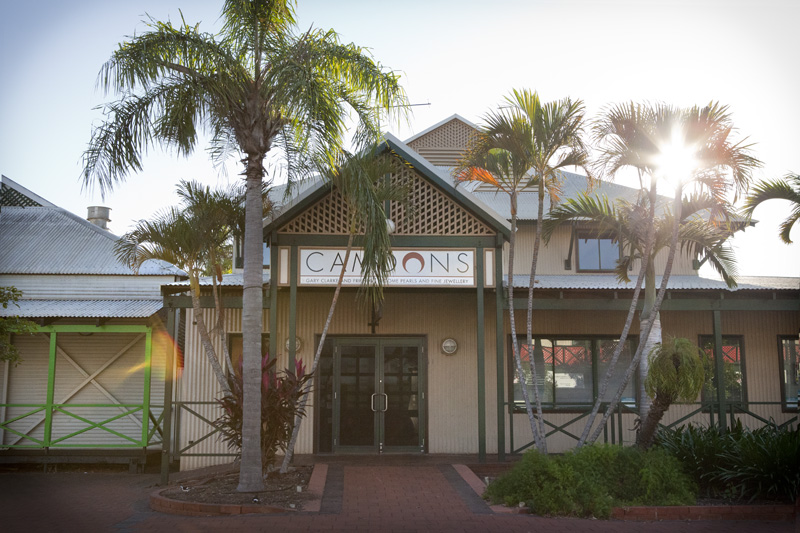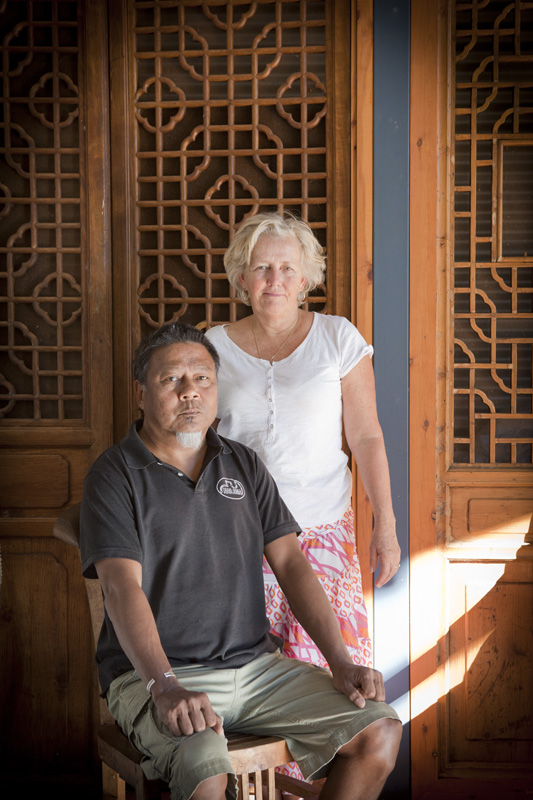I am near the end of the creative development and rehearsal phase of Yasukichi Murakami – Through A Distant Lens, and I wanted to take a moment to thank the people and organisations that helped me get this far.
Of course the trouble is where to draw the line – I can think of so many more people who helped me along the way, simply being my friend, listening to me over a cup of tea at times of trouble or sharing a glass of wine with me when I had cause to celebrate. There are those who have contributed financially towards our crowd funding campaign, and others who helped me spread the word.
Names of the supporters of the Pozible / Murakami fundraising campaign are listed in a separate post – click here.
… and my “thank you list: goes on, but here is a list of people who helped with the nitty-grittys, and I owe a heart-felt thanks to that I wanted to share on this blog today.
In alphabetical order…
Armstrong, Jon for your advice and taking photographs of me in Broome.
Asano, Wakako, Shigeaki Iwai, Vic McEwan and Satsuki Odamura for working with me in Japanese cemeteries and grave sites all over Australia in our project In Repose, which gave me the opportunity to begin hearing the ‘silent voices’.
Asian Australian Studies Research Network (AASRN) for your continuous support, education and inspiration.
Australia Japan Association of Northern Territory (AJANT) for hosting an artist-talk, which allowed me to ask the Darwin community to help me find Murakami’s photographs.
Barr, Françoise and Northern Territory Archives for dedicated, kind, detailed and lateral ways of help in researching Yasukichi Murakami’s photographs, records and Murakami family history.
Blaylock, Malcolm for directing Yasukichi Murakami – Through A Distant Lens, encouraging me to write a dialogue based script for the first time in my life, being my artistic collaborator since 2001, thoughtful contribution to the script, and the depth of understanding the refined sensitivities of the human condition.
Bodie, Jane for being a dramaturg for Yasukichi Murakami – Through A Distant Lens, sitting with me for many hours in front of my computer doctoring my half-baked script, all the whilst listening and honouring to what it was that I wanted to say.
Bracher, Michael, Richard McLean, Takenobu Hamaguchi, and the Paspaley Group for showing me the Paspaley Family Photographic Collection.
Brockman, Benjamin for being the calm and reliable production manager of Yasukichi Murakami – Through A Distant Lens and QLab expert for rehearsals and Darwin Festival.
Chin, John for sharing stories on the Stone Houses and Murakami family.
Cleveland, Ken for acute feedbacks on early versions of the script, and providing me with seeds of thought.
Clocks and Clouds (Kraig Grady and Terumi Narushima) for music from their CD In A Pentagonal Room in the Diving Suit and Tanami scenes.
Dann, Lucy and family for taking photographs with me in Broome, and introducing me to old Broome families in the first place, when we first shared our time together in The Heart of the Journey.
Darwin Rondalla for music in the Darwin scene.
DeQuincey, Tess for constant encouragement and advice on this project.
Ensemble Offspring for music from their CD Behind The Keys in the promotional video.
Grady, Kraig for his handmade musical instruments.
Gruchy, Mic for your emotive and moving visual imagery in Yasukichi Murakami – Through A Distant Lens, audio-visual expertise, thorough ways of working, as well as calm and wisdom that comes with your wealth of experience.
Hamaguchi, Pearl for sharing photographs of your mother and friend taken by Yasukichi Murakami, and sharing many hours of stories about old Broome.
Hashimoto, Kuni for playing the part of Yasukichi Murakami’s ghost in Yasukichi Murakami – Through A Distant Lens, generously imparting your knowledge of theatre, assisting me with the script, and continuously reminding me of that which is of importance.
Hills, Ben for your support, behind the scenes encouragement, advice, listening to my complaints and looking after my general well-being.
Hirayama, Sachiko for giving me a home in Darwin and organising an artist talk, which allowed me to ask the Darwin community to help me find Yasukichi Murakami’s photographs.
Hirobe, Kyoko for channelling the spirit of Yasukichi Murakami, resulting in messages, which became the backbone of the script.
Jones, Noreen for your book Number 2 Home, a must read for all Japanese Australians, and sharing the old Mise and Yamamoto photographs from the Noreen Jones Photographic Collection.
Kaino, Lorna for being my first partner for this project, your series of essays, our joint conference paper in Canberra and Stuttgart on Yasukichi Murakami and being with me when we found his grave in Cowra
Kawai, Reiko for information about Darwin and continuing friendship since The Heart of the Journey.
Kobayashi, Asako and Go-Nichi Sunday Japanese Language Radio for assisting in calling out to the community to find Yasukichi Murakami’s photographs.
Khoo, Tseen for your continuous support, encouragement and being an on-line ally at all times of the development process of this project.
Kim-Pok,Teik and Playwriting Australia for your funding support, having me as part of Lotus Playwriting Project and for your invaluable advice in completing the script for this project.
Konomi, Masafumi and the Japan Foundation, Sydney for funding assistance in this project at a crucial stage in our development and for your on-going support for this project.
Kylie Jennings and the Broome Historic Society for well-versed help in researching Yasukichi Murakami’s photographs and history.
Lance, Kate for your immaculately researched book, Red Bill and your generosity in sharing your photographs and citations on the internet for all future researchers, as well as sharing with me your meticulous original source materials.
Lewis, Lee, Simon Wellington, Alicia Talbot, all at Griffin Theatre Company and all participants of Story Lab 2012 for giving me the inspiration and encouragement to continue developing this project.
Lo, Jacqueline for our continuing dialogues about Asian Australian art practices in performance, and your support, which gave me the courage to explore the Japanese diasporic condition and WWII.
Lunn, Edwina and Georgie Sedgewick for inclusion in the Darwin Festival 2014.
Lynette Atchison and the Northern Territory Library for the efficient and well-informed help in researching Yasukichi Murakami’s photographs.
Maher, Chris and members of Shinju Matsuri Festival board for your inclusion in your 2014 program.
Masuda, Cauline for sharing a photograph of your grandmother taken by Yasukichi Murakami, visiting the Japanese Cemetery in Broome with me countless times, and your leadership in the Japanese community in Broome.
Masuda, Karin for channelling the spirit of Eki Nishioka, which became an important and poignant counter point in the script.
McEwan, Vic for sharing your music in the first stages of this project and for conference presentations in Stuttguard and Canberra.
Mills, Nichole, photographer Katrina Bridgeford, and the Sunday Territorian for making a call-out to the Northern Territory community to find Yasukichi Murakami’s photographs.
Mills, Terry for your support during my call out to the community to find Yasukichi Murakami’s photographs from his days in Darwin, and for dialogues which inspired crucial aspects of the script development.
Mills,Vanessa and ABC Radio, Kimberley for your genuine interest in Yasukichi Murakami and old Broome history, and assisting in calling out to the community to find Yasukichi Murakami’s photographs.
Minami, Reiko (Ruruka) Murakami for meeting me in Tanami and introducing me to her mother, Yasuko Pearl Murakami Minami, sharing family photographs and showing me Tanami and Kushimoto.
Minami, Yasuko Pearl Murakami for inviting me to your home, and sharing your family photographs and stories about your father and family history.
Murakami Gold, Lorna for being the first person to let me know about Yasukichi Murakami back in 1998 when I was photographing you, by telling me that your great-grandfather was a Japanese photographer.
Murakami, Julie for contacting me after finding this blog, sharing your family photographs and stories, and spending many hours researching with me.
Murakami, Kevin for visiting me when I was in Broome to help me understand the importance of family and descendants.
Murakami, Kisaburo Joseph for on-going support for this project, sharing family photographs, not only to me, but also to your family members in Australia, information and stories about his father and family.
Muraoka, Chie for your patient and dedicated web design and mastering.
Nagata, Yuriko for your definitive book Unwanted Aliens: Japanese Internment in Australia during WWII, introducing me to Joseph Kisaburo Murakami, and your continuing support.
Nagata, Yuriko, Keiko Tamura, Lorna Kaino, Shigemi Kurahashi, Chie Maruoka, Jun Nagatomo and Nikkei Australia for your support and information exchange.
Narushima, Terumi for your exquisite and evocative music, being the composer / musician / sound designer for Yasukichi Murakami – Through A Distant Lens, understanding the social political significance of this work, and being in the same emotional space and spirit with me throughout the process.
Ng, Kevin for your dedication and enthusiasm as the technical manager and audio-visual expert during the creative development phase of Yasukichi Murakami – Through A Distant Lens.
Norman, J.E. deB and late G.V. Norman for your book A Pearling Master’s Journey and sharing stories of old Broome and your family history.
Pampolha, Luiz for being the lighting designer for Yasukichi Murakami – Through A Distant Lens, adding to the production the essential refinement, atmosphere and your depth of experience for the production.
Shun Wah, Annette and Performance 4a for producing Yasukichi Murakami – Through A Distant Lens, your wisdom, commitment, resilience, significant advice on script development and story-telling, for being a pioneer for us all, and the depth of your understanding the wider meaning of this work.
Silva, David for your access to your galleries in the Stone Houses, support in my research and continuing to be the photographic guardian of the Stone Houses, Yasukichi Murakami’s former home and studio.
Sister Pat Rhatigan, Helen Martin and Sisters of St John of God Heritage Centre, Broome for sharing your extensive photographic collection for this project.
Skrzynski, Hannah, Teik Kim Pok, Jennifer Wong, Annette Shun Wah and Performance 4a for running our successful Pozible fundraising campaign.
Sone, Yuji for being the dramaturgical consultant and continuing to support this project, your wealth of knowledge, advice, and giving me a second chance despite my initial failed attempt at creating this work as a Master of Arts Degree.
Sone, Yuji, David Mitchell, Marcus Eckerman and Macquarie University, Department of Media, Music, Communication and Cultural Studies, Faculty of Arts for partnering this project, giving us technical support, providing filming, editing and invaluable dramaturgical consultancy and a home for our development and rehearsals.
Steer Adam, Claire Rawlinson and ABC Radio, Darwin for assisting in calling out to the community to find Yasukichi Murakami’s photographs.
Tamura, Keiko for being at Yasukichi Murakami’s grave and helping me listen to his voice.
Tanaka, Elly for providing the kimono and expertise needed for Yumi Umiumare / Eki Nishioka’s wardrobe support.
Terushima, Narumi for your exquisite and evocative music, being the composer / musician / sound designer for Yasukichi Murakami – Through A Distant Lens, understanding the social political significance of this work, and being in the same emotional space and spirit with me throughout the process.
Theatre Board, Australia Council for the Arts for providing the necessarily support in funding for this project in two of its crucial phases.
Thompson, Jacinta (former Artistic Director, OzAsia Festival) and OzAsia Festival for inclusion in the OzAsia Festival 2014.
Tominaka, Yoshie and Mioko for giving me support, practical, yet humorous advice and a home in Japan whilst researching this project.
Tsuda, Mutsumi for additional contemporary and historical photographs for this project, and on-going artistic dialogue.
Umiumare, Yumi for being (it seems not quite right to say ‘playing the part of’) the part of Eki Nishioka’s ghost in video for Yasukichi Murakami – Through A Distant Lens, consistently reminding me to speak my truth and to express what it is that I need to express as an artist and human being.
Watanabe, Miho for photographing our creative development showing and our publicity photographs.
Wells, Micheal for detailed information on the Stone Houses and trusting me to complete this project.
Wells, Michael, Karen Moir and Department of Lands, Planning and the Environment for giving this project its first funding for development.
Werner, Koko for channelling the spirit of Yasukichi Murakami, with messages, which assisted the latter stages of the script development, and filling in my then blind spots.
Wood, Joanne and the Australian National Archives, Darwin Branch, for enthusiastic help in researching Yasukichi Murakami’s records, and the Australian National Archives for permission to reproduce records held in their collection.
Yamada, Tomoko for organising the Broome Cemetery O-bon photo shoot by Takazo Nishioka’s grave.
Yu, Peter and Sarah for giving me a place to stay in Broome, Peter’s gorgeous cooking and Sarah and Nyamba Buru Yawauru‘s ongoing projects and engagements, allowing me multiple trips to Broome as well as to further my understanding of old Broome and the history of pearling.
Yura, Arisa for playing the part of Mayu in Yasukichi Murakami – Through A Distant Lens, your dedication in spending much time in dialogue with me to understand my journey, as well as taking the time to discover photography, coming to Cowra to Yasukichi Murakami’s grave, to meet his family.
… the list to be continued.
-Posted by Mayu Kanamori

